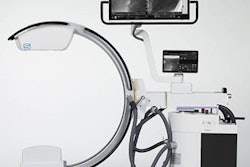The American Association of Medical Colleges predicts the U.S. physician shortage will grow from 91,500 in 2020 to 121,300 by 2030. In this study, the group analyzed temporal trends and state-by-state geospatial variations in the VIR female physician workforce.
The researchers looked at physician workforce data for 2015, 2017, and 2019 for each U.S. state. They assessed total active female physicians, total female physicians per specialty, and total female physicians per 100,000 population in VIR.
The group found the number of total active female physicians in the U.S. grew by 3.82% per year between 2015 and 2019. Out of the specialties analyzed, the annual growth rate of female physicians was highest in vascular surgery (12.61%), which was followed second by VIR (7.8%). The state of Massachusetts has the highest proportion of women in VIR at 19%, while Utah had the highest growth rate in the number of female VIR physicians at 16.6%.
"Female VIR physicians make up a small fraction of the VIR workforce, but their numbers have increased at a faster rate than most surgical specialties except vascular surgery," according to presenter Dr. Suryansh Bajaj and colleagues.
Grab a coffee and attend this morning session to learn more.



















